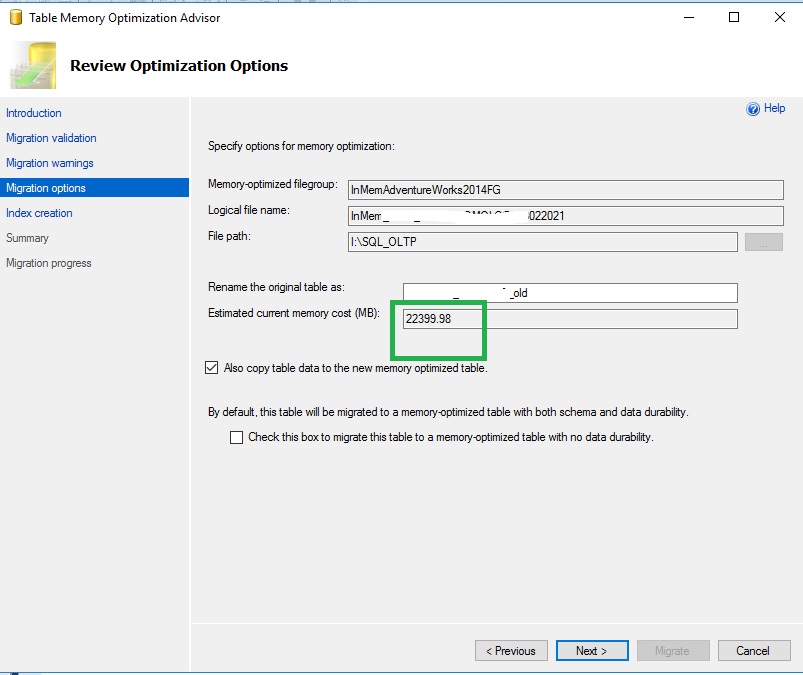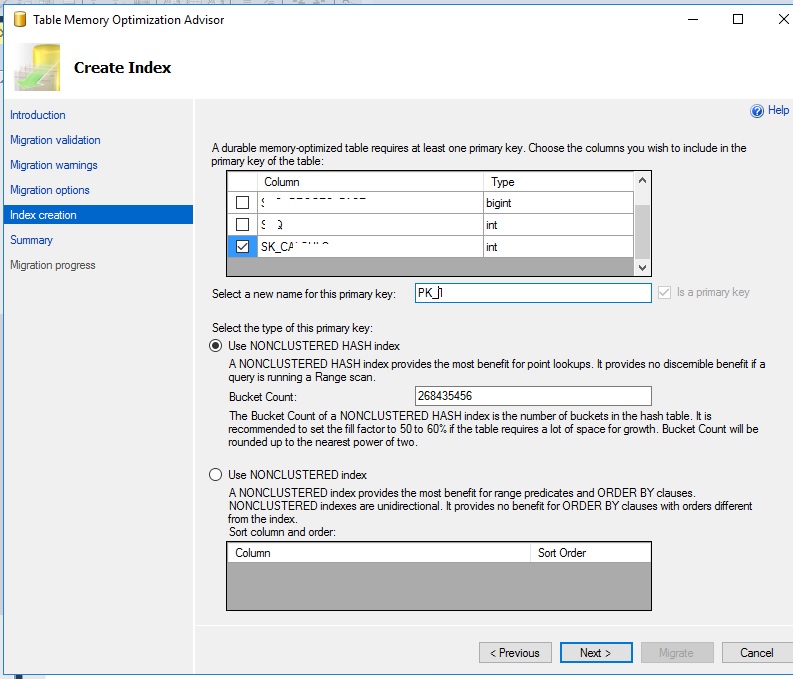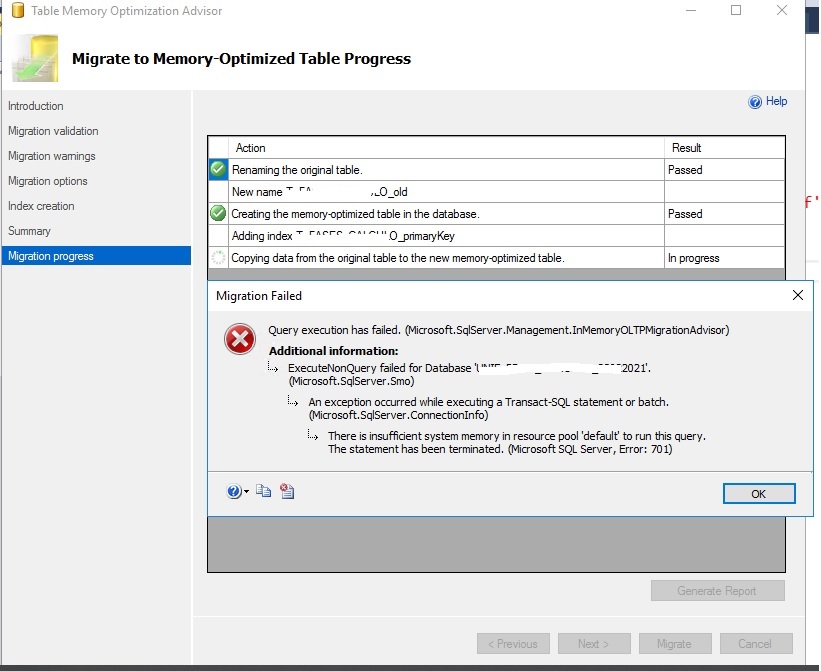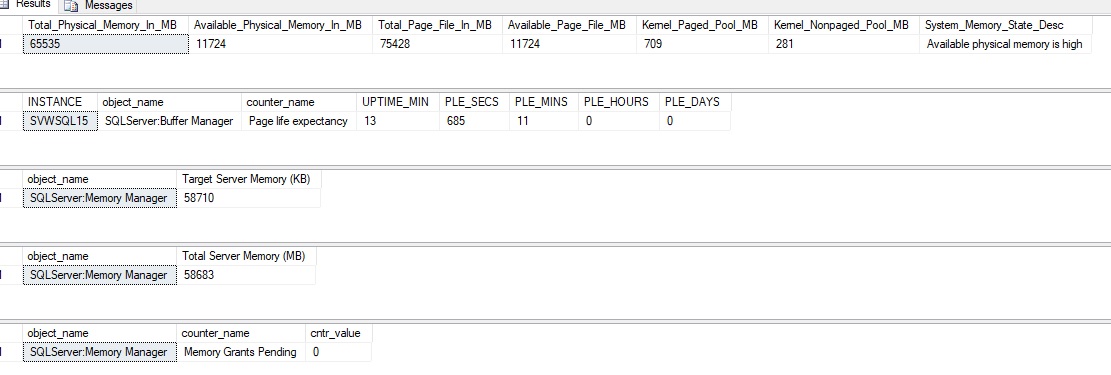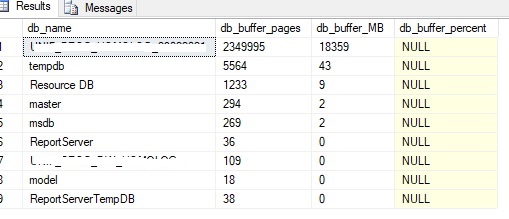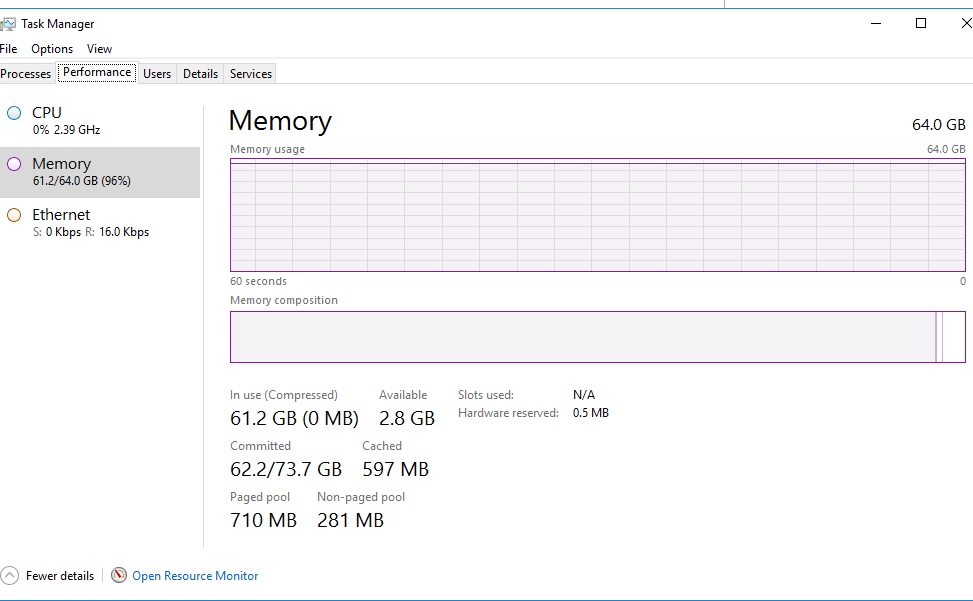Hi,
The Memory-Optimization Advisor estimates the amount of memory the new memory-optimized table will consume based on metadata of the disk-based table. If sufficient memory is not allotted, the migration process may fail.
If your SQL Server is Enterprise or Developer edition that supports Resource governor feature, creating a separate resource pool may help your problem.
If you have not created a named resource pool for your in-memory tables you should do that and bind your In-Memory OLTP databases to it. See the topic Bind a Database with Memory-Optimized Tables to a Resource Pool for guidance on creating and binding your In-Memory OLTP databases to a resource pool.
https://learn.microsoft.com/en-us/sql/relational-databases/in-memory-oltp/resolve-out-of-memory-issues?view=sql-server-ver15#increase-available-memory
